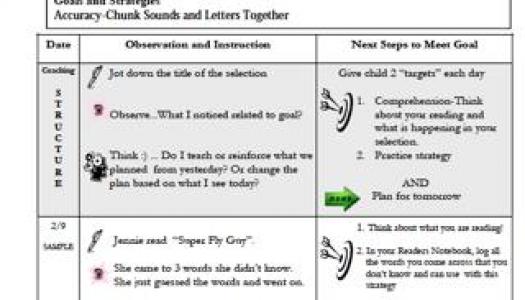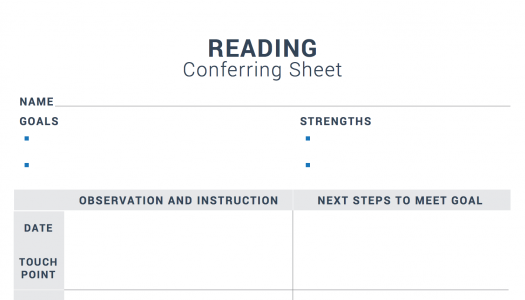Touching Base with Touch Points
Join Our Community
Access this resource now. Get up to three resources every month for free.
Choose from thousands of articles, lessons, guides, videos, and printables.
Touch Points are essential in our classrooms for two important reasons. They enable us to evaluate the effectiveness of our instruction, and they help us monitor student progress. Every time we touch base with a student, whether in a small group or in a one-on-one conference, we take notes about what we noticed, the instruction we provided, and what the student’s next steps might be. We stay focused on the child’s goal and strategy to keep the conference brief and to maintain curricular coherence.
Touch Points are used to evaluate and determine how a child is progressing on using an assigned strategy.
For example, if a student is working on the strategy of Infer and Support with Evidence to Boost Comprehension, we may listen to them read a brief portion of a text and make an inference, or have them share a place in their book where they made an inference founded on text evidence. We assign a score in the space under “Touch Point” on the student’s conferring form. The next time we meet, we assess again and give another score to reflect the current level of proficiency:
4 = exceeding standard
3 = meeting standard
2 = approaching standard
1 = below standard
When a child has received two or three 3s or 4s in a row, we trust they have competently added the strategy to their repertoire and are ready to layer on a new one. A check mark and date in the Touch-Point box on the conferring form or strategy-group page signals the end of the teaching and coaching support for this strategy. Though we phase out direct instruction, we continue to monitor periodically.
We value Touch Points because of how easily they allow us to monitor student understanding and application of the strategies we’ve taught to help them reach individual goals.
Touch Points also help us monitor the effectiveness of our instruction. If after three teaching attempts, a student has only 1s or 2s, we look at our instruction and change something. We evaluate the
- books and materials being used (fiction, nonfiction, good-fit books?)
- instructional setting (one-on-one or small group),
- the form of instruction (modeling, think-aloud, explicit instruction),
- student’s reading behaviors (from the I-chart), and
- strategy and goal (asking whether this is the best strategy/goal for this child at this time).
Touch Points serve as a formative assessment tool. They are one data-collection piece we use when determining a child’s grade. If your school uses letter grades, be careful not to make a correlation between the two: it is not that simple. For example, a 3 does not always equal a B. Students might excel at a strategy while reading a good-fit book that is below grade level but be unable to pass a grade-level assessment passage. We use conferring Touch Points in conjunction with grade-level assessments and grade-level running record passages when determining if a child meets standard.
If in four or five observations a student gets 3s and 4s, we layer on a new strategy.
Your professional judgment, grade-level assessments, district standards, rubrics, and guidelines will help you determine a score, whether it’s a letter grade or in some other form, that truly represents a student’s level of mastery.







